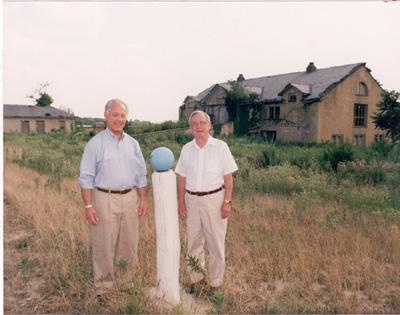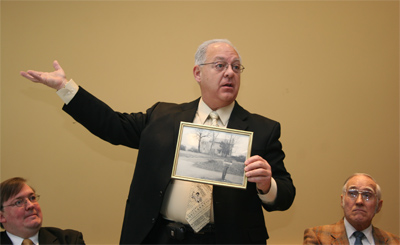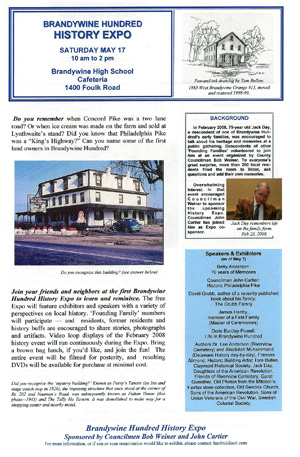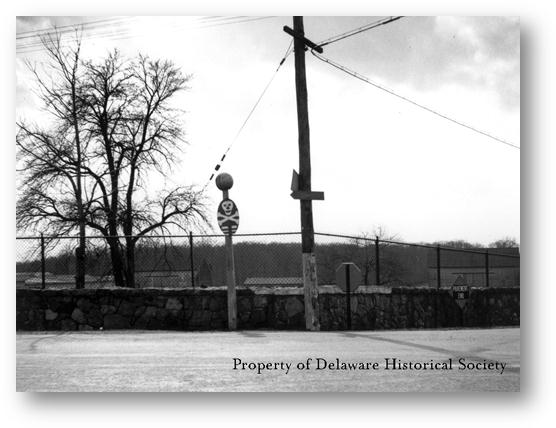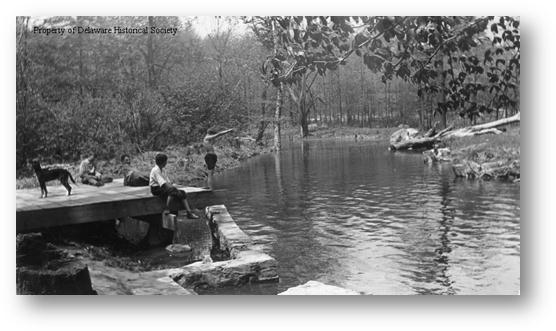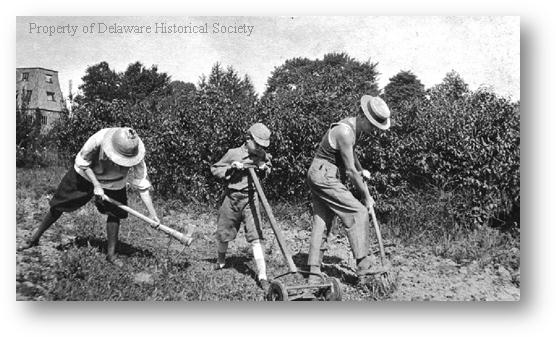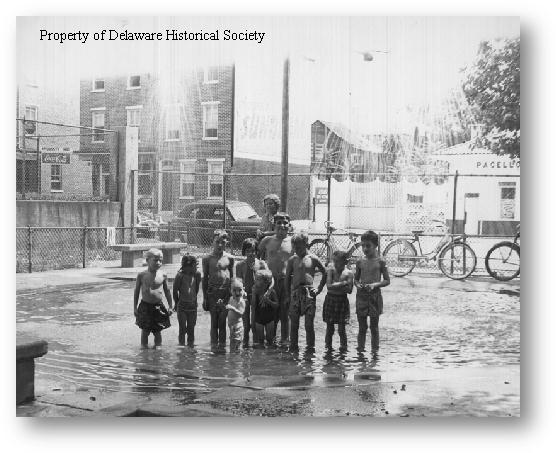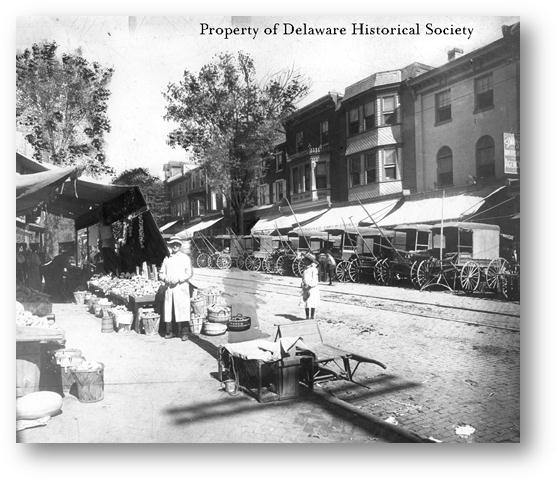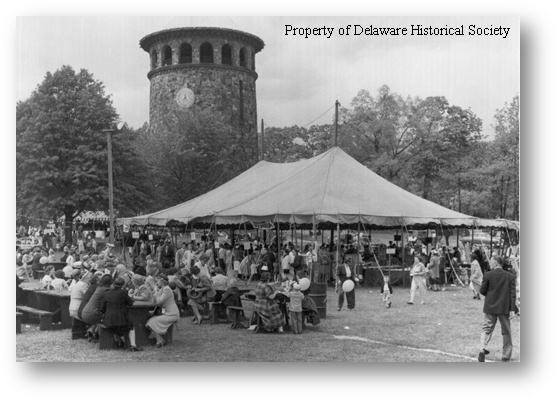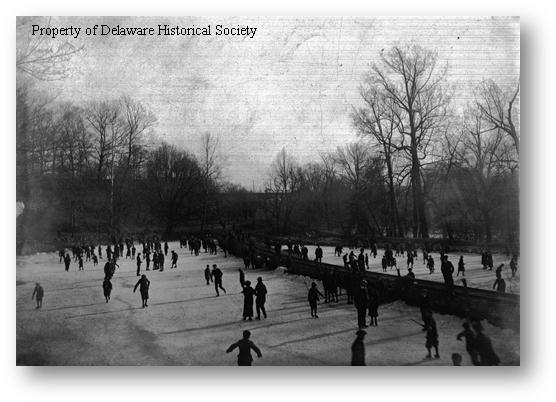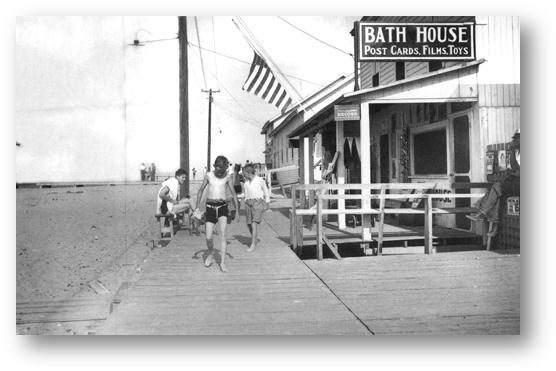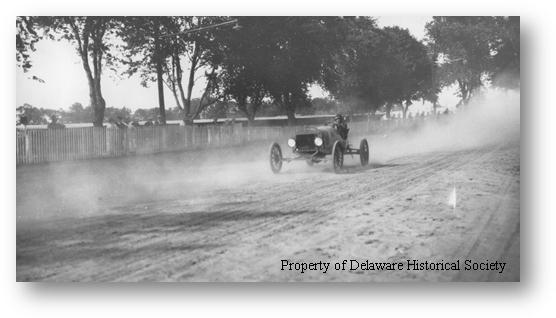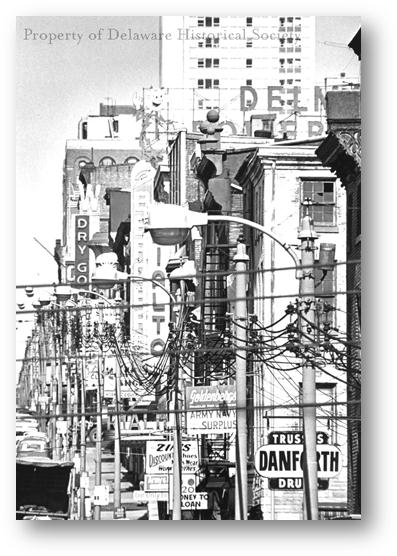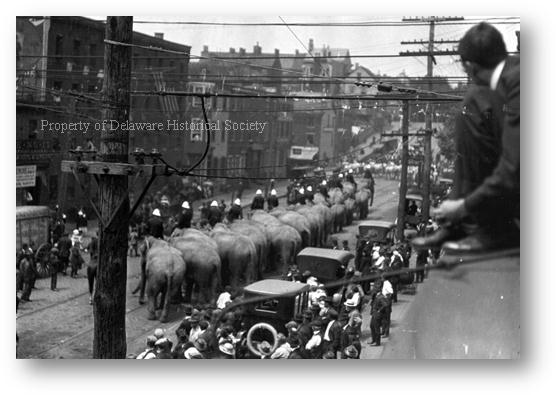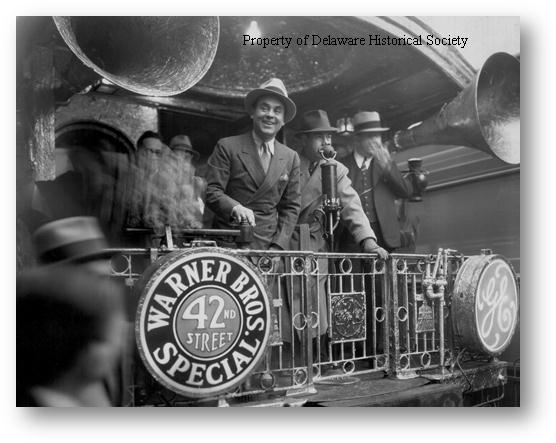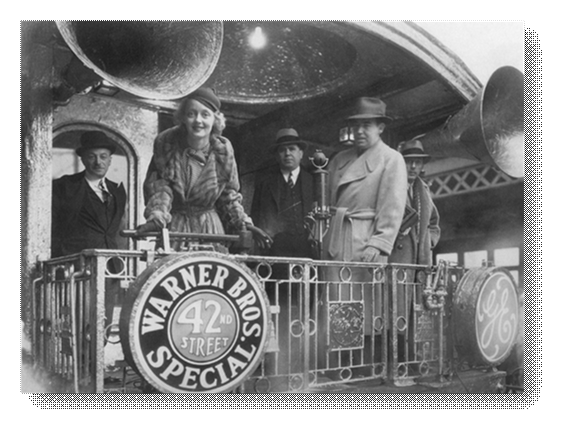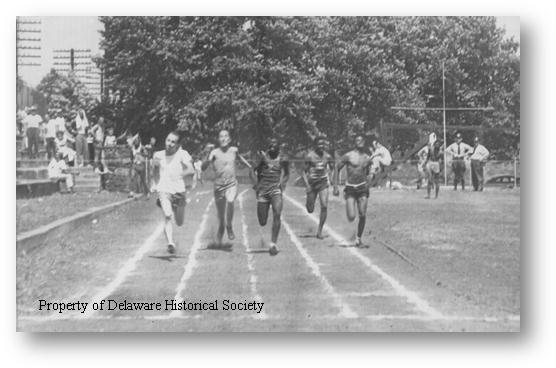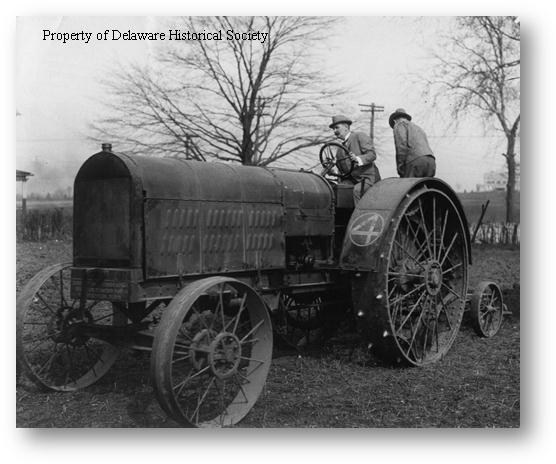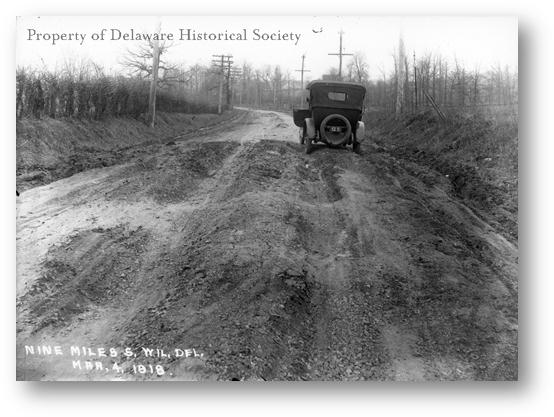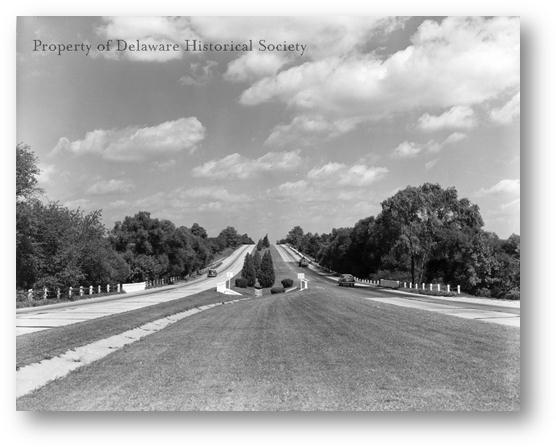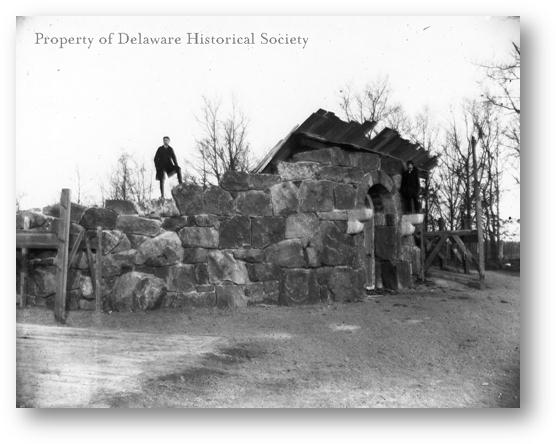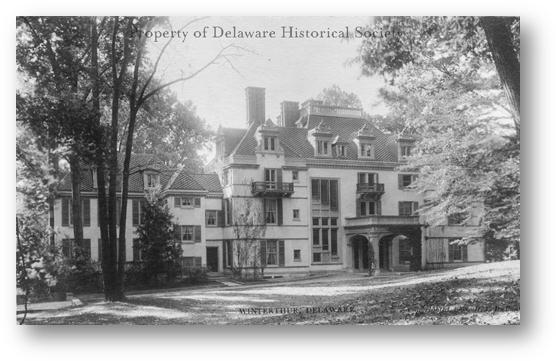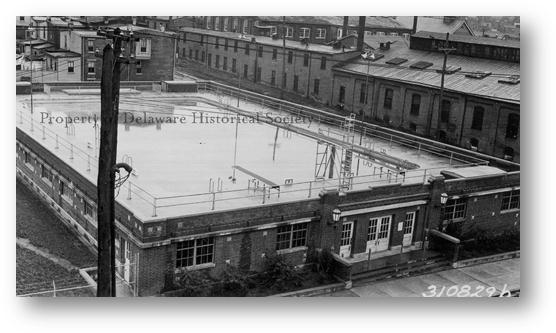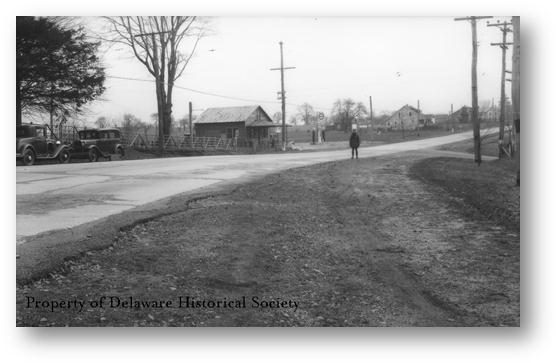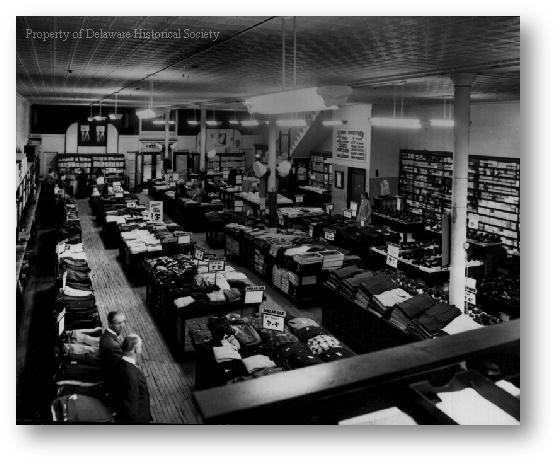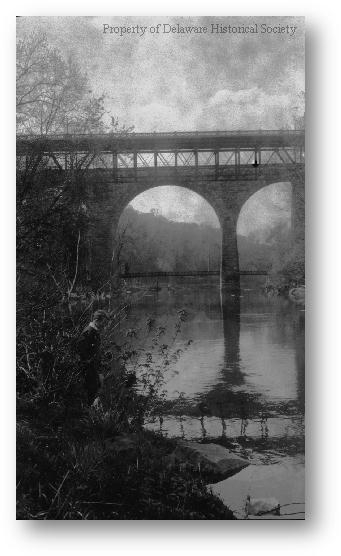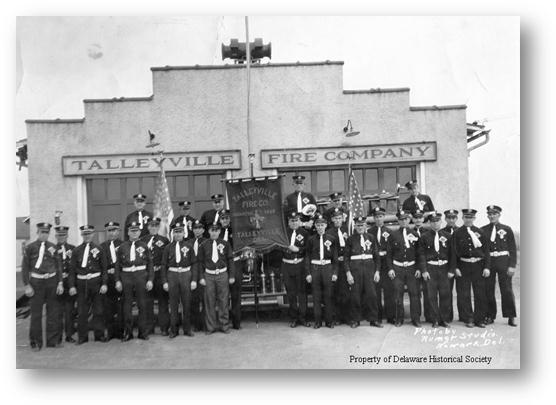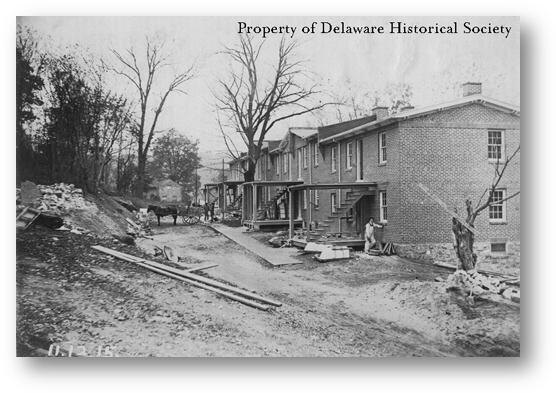Contact - Volunteer - Contribute - (302) 468-6024

|
||||||||
| Brandywine Hundred History | ||||||||
Brandywine Hundred History Expo
Subject: Wilmington
- Some Where In Time
Some
interesting photos from the Delaware Historical Society website - http://www.hsd.org/HistoricReprod/HistoricReproductions_photos_1.htm Enjoy!
Blue
Ball, Concord Pike, Wilmington , 1930
We
use the name Blue Ball today but many don’t remember its origin. About 1800 the
Blue Ball tavern was built on the Concord Pike a toll road that was privately
operated until 1911. The tavern keeper put out a large blue ball suspended on a
pole to alert the stage coach drivers that passengers were at the tavern,
waiting to board.
Arden,
Delaware, swimmers, c. 1910
Known
as the Experimental Village , Arden was formed in 1900 on a 162-acre farm along
Grubb Road . Frank Stevens and Will Price of Philadelphia sought to establish a
settlement dedicated to the utopian ideals of Henry George, a late-19th-century
proponent of the Single Tax Theory. The village attracted many artists and
artisans, and by 1908 there were 50 year-round homes. Shown here: children enjoy
swimming.
Arden,
gardeners, c. 1910
Known
as the “ Experimental Village ,” Arden was formed in 1900 on a 162 acre farm
along Grubb Road . Frank Stevens and Will Price of Philadelphia sought to
establish a settlement dedicated to the utopian ideals of Henry George, a late
nineteenth-century proponent of the Single Tax Theory. The village attracted
many artists and artisans and by 1908 there were fifty year-round homes. In the
next seven years, that number would double. Above a family works in the garden
near their home.
Pine Street Park , Wilmington , Delaware ,
1949
Kids
stand ankle deep in cooling water under the sprinklers in Pine Street Park , at
Fourth and Pine streets. Their bikes stand almost artistically against the fence
in the background
Wilmington Farmer's Market, 1910s
Farmers
and hucksters began selling their goods and produce on King Street in Wilmington
in the 19th century. This view was retouched by the photographer who removed a
tree from the curb at the center of the image and repainted the awning behind
the man who stands left of center. Even so, it tells the visual story of what
the market looked like 100 years ago.
Wilmington Flower Market, 1950s
Edward
Cohen of Madison Street in Wilmington photographed this view of the Flower
Market. Rockford Park was not the original setting for the Market, it was held
at Cool Spring Park from 1921-1950, and at Brandywine Park 1950 and 1951 before
it moved to its current home in Rockford Park in 1952. For more than 75 years
The Flower Market has raised money to support local children’s charities. It has
become a beloved annual tradition for generations of New Castle County
families.
Ice
Skating on the Brandywine River , Wilmington , Delaware ,
1914
The
race and river near Van Buren Street are both frozen over, allowing skaters
outdoor recreation at one of the city’s most popular parks, Brandywine Park . At
this time, the Brandywine Zoo had not yet opened.
The
Boardwalk of Bethany Beach is shown
here on a hot and quiet day in the 1940s.
Wawaset Park, 1916
Today Wawaset Park is known as an upscale city neighborhood.
Before it was developed in 1919 as a residential neighborhood largely for DuPont
Company employees and their families, it was a park. Here an automobile speeds
around the track. The park grounds hosted the Delaware State Fair until the fair
moved to Elsmere in 1917.
Market
Street, Wilmington , Delaware , 1967
Lubitsh
and Bungarz Studio in Wilmington photographed this view looking north on Market
Street from the 300 block. Ready Kilowatt stands atop the Delmarva Power and
Light Building . Also visible are signs for the Rialto Theater, Wilmington Dry
Goods, Berger Brothers and Goldenbergs, all have since disappeared from Market
Street .
Ringling
Brothers Circus Parade, Wilmington , Delaware , 1917
When
circus performers, workers and animals got off the train in Wilmington at the
Pennsylvania Railroad station, they paraded their way through town to the circus
grounds at Thirtieth Street . Here the parade is seen traveling along Fourth
Street . A great way to advertise their upcoming shows, plenty of spectators
gathered along the route to welcome the spectacle.
Movies
Stars, Wilmington , 1930s
Movie
stars rode into town on the Warner Brothers “ 42nd Street Special” The train was
used for public appearances to promote studio movies. This is most likely the
B&O station where many whistle stops occurred over the years. Others who
whistle-stopped here during this era included Presidents Franklin Roosevelt and
Harry Truman.
Bette
Davis on board - 1939
Warner
Brothers executives accompany actress Bette Davis on board a special train in
1939. Davis and many other celebrities traveled to Wilmington during the 1930s
and 1940s to promote their movies.
State
Trace Meet, 1949
C.
Stewart, a young African-American sprinter won the 100 yard dash at the state
track meet in 1949. The meet was held at Baynard Stadium in Wilmington ,
Delaware .
T.
Coleman du Pont, late 1920s
Generally
known as a partner in the DuPont company and as the man who spear-headed the
effort to build Route 13, the DuPont Highway . T. Coleman personally donated
approximately $6 million toward that effort. It is said that his eagerness for
the north-south highway stemmed in part from his own frustration driving on
roads. Here he is seen at his farm outside the city.
Road
South of Wilmington , Delaware , 1918
When
this photograph was taken on March 4, 1918, construction on U.S. Route 13, the
DuPont Highway was underway. This image leaves no doubt as to the importance of
that massive and costly undertaking. The modern highway would speed the delivery
of farm products from Delaware ’s farmers to nearby markets, but it would also
make every day travel safer and easier.
DuPont
Highway, c.
1924
Taken
to document the newly-completed DuPont Highway , this photo tells other stories
too. Compared to our experience today, the road appears closed with so little
traffic. The small signs near the base of the bridge read: “For your own safety
fishing and crabbing is prohibited from this bridge.”
Rockford Water Tower, Wilmington , Delaware ,
1899
Construction
of the tower began in August, 1899 and took two years to complete. The
foundation was built of Brandywine Granite gathered from within the park.
Scaffolding is visible at the far right. After the foundation was laid, a
500,000 gallon, 6,000 pound steel water tank, built at nearby Edge Moor Iron
Works was installed. The bottom diameter of the tower is fifty-seven feet.
Winterthur ( Delaware ), 1900s
This
real photo postcard shows the home of Colonel H.A. duPont. His son, H.F. du Pont
graduated from Harvard and began to manage their home in 1903. H.F. later
inherited the house and set up the Winterthur Corporation, a non-profit
educational entity. In 1951, Winterthur opened its doors as a museum and
maintains its stature among the world’s finest museums of early American
decorative art and furnishings.
Kruse
Poole, Wilmington , Delaware 1930
Built
as a public pool to serve the African-American community, it was located on the
roof of 1325 Poplar Street and named for Edwina Kruse. The beloved educator was
born in the West Indies and came to Delaware in 1870 to teach. In 1876 she
became principal of Howard High School . She was also involved in social causes,
especially the rights of African-American women.
Centerville, Delaware 1932
This
photograph was taken to document an accident scene. Today, it documents the
landscape of the settlement along Kennett Pike. When the railroads bypassed the
town, it stopped growing. Neighboring du Pont family members paid for the
widening and paving of the Kennett Pike. During the 1950s the small country
stores were replaced by upscale stores, boutiques and restaurants.
Brandywine
River Scene, ca. 1908
C.P.
M. Rumford photographed a young boy looking into the Brandywine River in this
photograph that could easily be a painting. In the background are the Augustine
and B&O railroad bridges. The Brandywine River runs through the heart of the
Wilmington and has been central to the city’s life from the beginning. It is a
frequent subject of artists and photographers because of its beauty.
Talleyville
Fire Company, Wilmington , Delaware , 1929
Members
of the volunteer company pose outside their building. The company formed in
October 1928 and opened this company house one year later. Rumer Studio of
Newark photographed this proud moment.
Bancroft
Mills, Worker Housing, Wilmington , 1896
In
the tradition of large companies of the time, The Bancroft and Sons Company
built housing for its workers. Seen here under construction are houses on
Rockford Road . More than one hundred years later, the homes, nearing completion
in this image, are still considered desirable housing today.
|
Give Bob a "like" on Facebook: |
|||||||
|
||||||||
Paid for by Friends of Bob Weiner - www.BobWeiner.com - (302) 468-6024 - Volunteer - Contribute |
